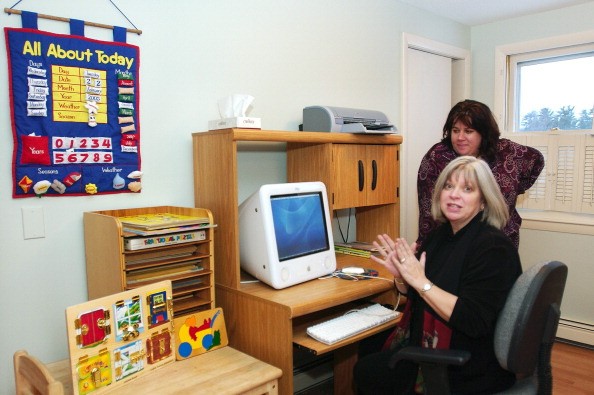
Following well over an already existing 20 years of avid computer development, seeing the slow yet powerful rise of the Macintosh amid the 1980s and the company's soon restructuring in the decade thereafter, Apple debuted a rather interesting form of hardware: the eMac. Announced in April 2022, Apple's eMac was intended for the sole purposes of in-school computer labs and classroom education but no sooner realized an avid bout of consumer demand.
Released on April 29th, 2002, the eMac proved to be perfect for its intended purposes. Its relatively expensive $999 price point seemingly didn't deter its outward utilization and the eMac specs for its time were certainly well-received. Housed within an all-too-familiar enamel-white casing and a 17-inch flat-faced CRT display, the computer boasted a 40GB hard drive, 700 MHz PowerPC G4 processor, and 128 MB of RAM.
For some additional perspective, average PC specs in 2002, according to this PC World forum, highlight that the eMac was somewhat ahead of its time, certainly for its use case as being but a student learning apparatus. The eMac likewise featured a built-in CD-ROM drive, twin speakers, dual FireWire ports, and five USB ports. And, if that just wasn't enough, Apple offered a beefier version at $1,199 that utilized a 56K internet modem, in case your school of choice didn't have the ideal web surfing capabilities.
Unfortunately, the eMac couldn't be graced with Apple's now well-known web browser Safari, which has found its home on nearly every Apple device since its official launch in early 2003. It did, however, utilize a preinstalled version of Microsoft's Internet Explorer along with Puma, Apple's 10.1.4 iteration Mac OS X.
Related Article: Apple Pay Mother's Day Promo: Get HUGE Discounts, Allowances on Flowers, Gift, and MORE
In April 2002, the one and only Steve Jobs explained the remarkability and prowess behind this new machine:
"Our education customers asked us to design a desktop computer specifically for them. The new eMac features a 17-inch flat CRT and a powerful G4 processor, while preserving the all-in-one compact enclosure that educators love."
Around this time and even well before, Jobs was a spirited advocate for enhanced education parameters in the US. Despite his creations, the tech wizard still felt at odds with how his devices could be leveraged in service of the younger generation, going so far as to even say in a 1996-published Wired article, "What's wrong with education cannot be fixed with technology."
Whether his eMac enjoyed success stories in the classroom remains unclear, but the product did eventually find acclaim beyond schools. Not a mere two months following its official debut, the eMac would find itself on consumer shelves due to increased demand via the public.
The Apple device would go on to serve consumers until October 2005, when the eMac would once again find itself based solely within classrooms. For its three years of hype and adoration, it experienced a plethora of configurations, one of which even boasted an integrated SuperDrive.
By July of 2016, the eMac had finally met its match with Apple's aptly named iMac, a low-end 17-inch iteration that fared well in some reviews, with Digital Trends calling it "one of the better systems Apple has produced." Though it may not have been able to fix the education system itself, Apple's eMac certainly proved to be among the first real smart devices of its time and allowed both students and average Apple customers a slew of potential.
ⓒ 2025 TECHTIMES.com All rights reserved. Do not reproduce without permission.




